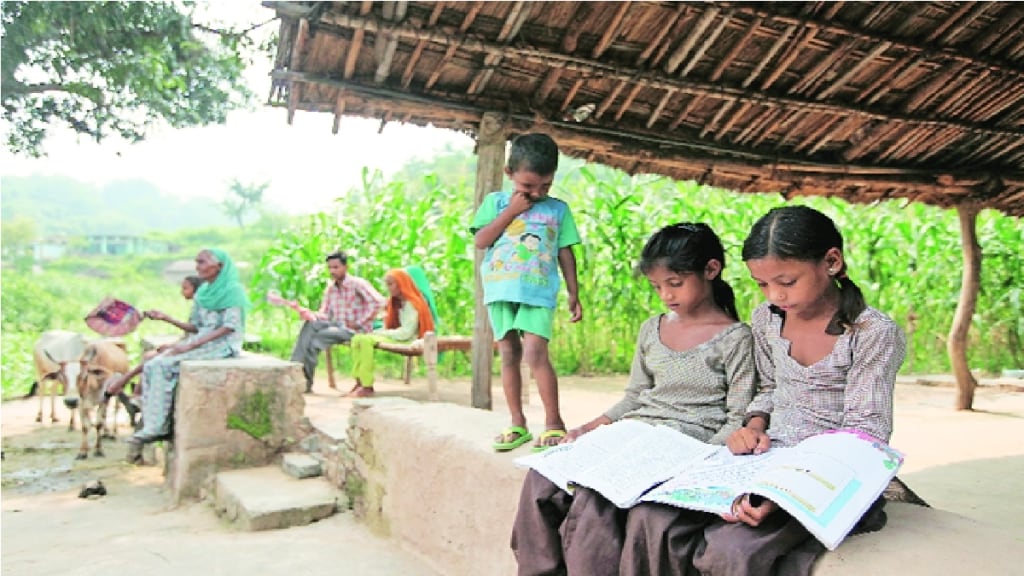By Maya Shahani
Education has been one of the most challenging frontiers for India ever since the country gained independence 74 years ago. Even though our literacy rate today stands at 74.04 percent, there are vast sections of the population for whom the advantages of formal education remain out of reach. This is especially true of India’s rural communities, who comprise 65.07 percent of the total population, yet are distanced from the urban mainstream when it comes to education. The Covid-19 pandemic has only exacerbated this problem with more children losing access to education. Thus, there is a pressing need for us to work towards ensuring that India’s rural communities receive the best possible access to education, and that schooling and higher education is promoted vigorously in these areas.
The pandemic has made it clear in no uncertain terms that technology in education is here to stay. Online learning became the next best mode of education for millions of young learners during lockdown. Even after reopening, it continues to be part of the pedagogical practices of schools and higher education institutions. In order to ensure that rural students can leverage the power of technology to benefit fully from this transition, the government needs to build supporting infrastructure to ensure seamless connectivity.
As per figures from the National Digital Literacy Mission (NDLM), out of the 20 percent of the poorest households in India, only 2.7 percent have access to a computer while only 8.9 percent have access to internet connectivity. Yet, this is the segment that would benefit the most from formal education. Furthermore, as per the Telecom Regulatory Authority of India (TRAI), only half of India’s population has access to good-quality Internet connections. All of these figures are indicative of the fact that, despite India’s growing number of internet users and the availability of some of the cheapest mobile data plans in the world, the country’s students and young learners are deriving no benefit from it.
Lack of infrastructural support is one of the biggest hindrances to online learning. Whether it is the unavailability of high-speed internet, interrupted electricity supply or unavailability of appropriate devices, each of these factors adversely impacts the quality of education in rural areas.
In order to bridge these gaps and make sure that rural students can get online to study, the government must explore collaborations with telecom and mobile companies, as well as technology firms to provide the necessary tools for learning. Such initiatives could include subsidies for learning data plans, provision of laptops at heavily-discounted prices for rural students and teachers, and free technical support and training to rural schools, colleges and higher education institutions.
Furthermore, online education content must not be constrained by language. From K-12 to higher education levels, rural school and university students must have access to course curriculums in their regional languages. This can ensure a faster rate of course adoption and better comprehension, which will encourage more students to pursue higher education. There are institutes that offer online courses in English communication, which the learners can pursue in parallel, to gain proficiency in the language for their future careers.
Online education tools, such as digital classrooms, teaching systems, boards, content, and language labs, have the potential to empower students in rural areas. It can help to solve the long-standing problems of low student-teacher ratios and help make education available to as many people as possible. This is especially important for students wanting to move into higher education as they are the future of their communities, and if equipped with quality education, could bring about lasting socio-economic change in their villages.
Technology has created an immense opportunity for bringing rural and tribal communities into the mainstream of quality education. For far too long, they have been deprived of the means to upgrade their skills and secure sustainable employment beyond daily-wage jobs. With online education, they can now obtain qualifications that will allow them to land white-collar jobs that provide better pay and a chance to uplift their families’ lifestyle and living conditions. There are higher education institutions who even offer programs like global MBAs, in partnership with leading foreign institutes, without the student having to spend money to go abroad. Modules that provide training in personal grooming and job interview preparation are also available, which can help learners improve their personae and develop self-confidence to ace the recruitment process.
The Indian Government is already doing its part in attempting to provide the opportunity, to all children, to get free education, which is also a basic fundamental right. In the 2022 budget, the government has allotted over 37,383 crore to the schemes such as – Rashtriya Madhyamik Shiksha Abhiyan(RMSA), Teacher Education and the Sarva Siksha Abhiyan. The State and The Central government will share the expenses of this project, with the Central government covering 85% of the expenditure while each state is responsible for the remaining 15%. This is a great step to ensure a reduction in illiteracy in the rural/tribal areas of India.
Bolstering education in rural areas through technology will provide specialised training to youth, create entrepreneurs for tomorrow with good decision-making skills and, most importantly, it will help to create more opportunities for sustainable livelihoods and discover the passionate hidden gems from these communities. The allotment of investment, expansion of infrastructure for online education, and focus on teacher training will not only benefit the citizens of rural India in the short term, but will help them to eventually become key pillars of the Indian Economy in the long run.
The authors is chairperson at The Shahani Group, TSCFM and Sage Foundation; vice chairperson at Global Dialogue Foundation.


